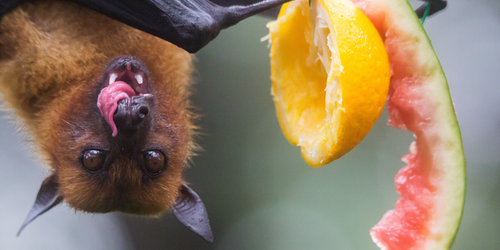Memory Plays a Critical Role in Animal Behavior
Just as the random motion of individual particles leads to the diffusion of a gas, the exploration of individual animals contributes to population-scale patterns in their movements. But unlike a particle, an animal’s memory of its past movements can influence where it chooses to go next—and that choice can vary from animal to animal. Now, Michael Assaf from the Hebrew University of Jerusalem and his colleagues have developed a general model of animal foraging behavior that includes the influence of memory [1]. The model accurately describes the movement patterns of Egyptian fruit bats.
Many phenomena in statistical physics are considered Markovian—meaning that the behavior at each time interval is independent of the behavior at preceding intervals. But when an animal forages, its decisions are non-Markovian—its choice to return to a known abundant site is balanced against its desire to seek a new foraging spot.
Assaf and his colleagues accounted for this behavior through a nonlinear increase in the likelihood that an animal returns to a previously visited site versus the number of times that site has already been visited. When the team varied this nonlinear parameter, they observed a phase transition in the collective dynamics of the animals. Below a critical value of the parameter, they found that animals were less likely to return to the same sites. Above this critical value, animals returned to the same site over and over, ignoring all other spots.
Applying the model to data of Egyptian fruit bats, they found that the data best fit the model when the nonlinear parameter was at its critical-phase-transition value: the bats employ a balanced mix of the two strategies. The team think that their model could be relevant to other problems, such as the spread of viruses and the dynamics of languages.
–Katie McCormick
Katie McCormick is a freelance science writer based in Sacramento, California.
References
- O. Vilk et al., “Phase transition in a non-Markovian animal exploration model with preferential returns,” Phys. Rev. Lett. 128, 148301 (2022).




